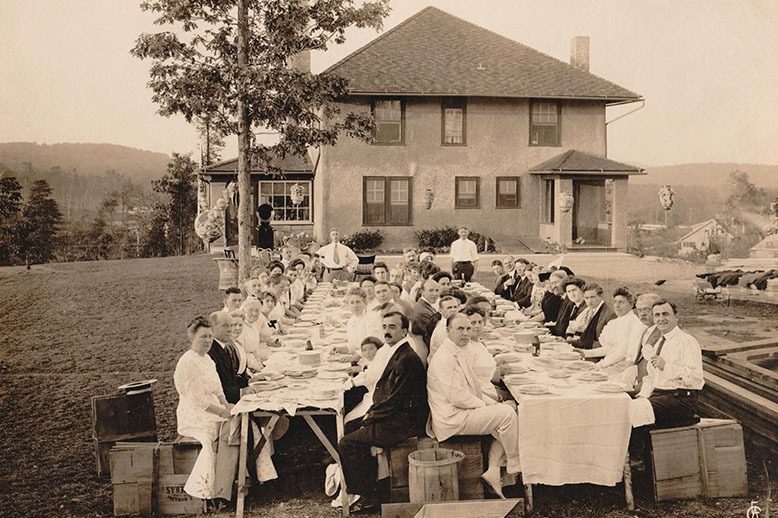
Tucked away among the rolling hills of Morris County, Mountain Lakes is a little-known gem of a town that has one of the largest collections of Craftsman-influenced houses in the country and was a forerunner of planned suburban communities in the 20th century. Established 100 years ago, in March 1924, the town was originally known as Mountain Lakes Residential Park. Nearly a third of all private residences in the 3.1-square-mile borough are so-called Hapgood homes, named after Herbert J. Hapgood, the builder who had the vision, along with local engineer Lewis Van Duyne, to transform a pristine tract of woods, rocks and wetlands into a thousand-acre community around nine lakes.
Since 2005, Mountain Lakes has been on both the New Jersey and National Register of Historic Places.
By 1923, around 500 Hapgood homes had been built in the town to meet the demand. Today, 454 of those original houses are still standing, making it one of the largest collections of Craftsman-influenced homes in the country.
“Herbert Hapgood’s houses in Mountain Lakes are important examples of Arts and Crafts architecture in the United States,” says Mark Alan Hewitt, author of Gustav Stickley’s Craftsman Farms. “His planning ideas also contributed much to the development of railroad suburbs during a key period of exurban expansion from major cities.”
Today, Mountain Lakes is still a residential lake community that hasn’t lost its signature identity or picturesque appeal. With stone pillars at its east and west entrances, the town has the aura of a country estate.
[RELATED: 12 Small Towns in New Jersey to Visit Now]
The borough’s ability to prevent intrusive development and protect its man-made and natural features is regarded as unique in American town planning. As a safeguard, the municipality owns approximately 40 percent of its acreage, preserving the land as open spaces and active recreational venues for residents.
Some affectionately call their tony suburb Camp Mountain Lakes, and the people who live there, Lakers.
From 1910 to 1923, Hapgood built several hundred year-round single-family houses. The first resident/owner in 1911 was Lawrence W. Luellen, originator of the disposable Dixie paper cup. Once the impressive stone train station (now a restaurant, the Station at Mountain Lakes) opened the following year, the commute to New York took under an hour, luring affluent urban professionals to “the freedom and beauty of country life.”
[RELATED: Hapgood’s: A Cozy Brunch Spot in Mountain Lakes]
Over the years, Mary Pickford (silent film star), Arthur Stringer (author of Perils of Pauline), Charles Steinway (great-grandson of the founder of piano maker Steinway & Sons), and Liz Claiborne (fashion designer) were residents of Mountain Lakes.
Hapgood was influenced by Gustav Stickley, the leading American designer promoting the Arts and Crafts aesthetic, who lived in nearby Morris Plains. The builder appropriated many of Stickley’s innovative core Craftsman principles, such as simplified designs without fussy ornamentation; straightforward use of local natural materials like puddingstone for foundations, fences, and chimneys, as well as chestnut wood for interior paneling and beams; and indoor-outdoor living areas enhanced by verandas, terraces, and sleeping balconies off the upper bedrooms.
A unique resource for homeowners is the Preservation Shed, administered by the borough’s Historic Preservation Committee, which collects and offers for reuse authentic architectural salvage like irreplaceable doors, windows, paneling, trim, flooring and even hardware for the historic homes in town.
Sueanne Sylvester grew up in Mountain Lakes and later moved back to raise her family. “If you want to be in Mountain Lakes, you will likely end up in a Hapgood,” says Sylvester, a Realtor in the borough.
No one knows New Jersey like we do. Sign up for one of our free newsletters here. Want a print magazine mailed to you? Purchase an issue from our online store.



